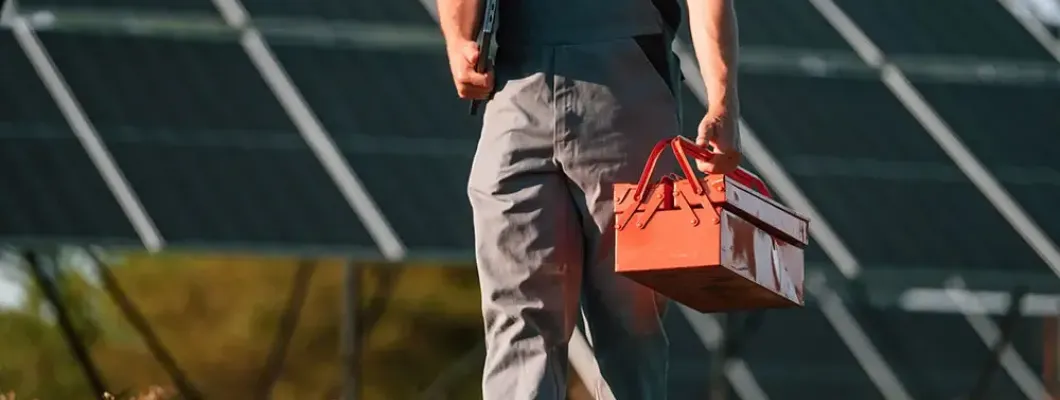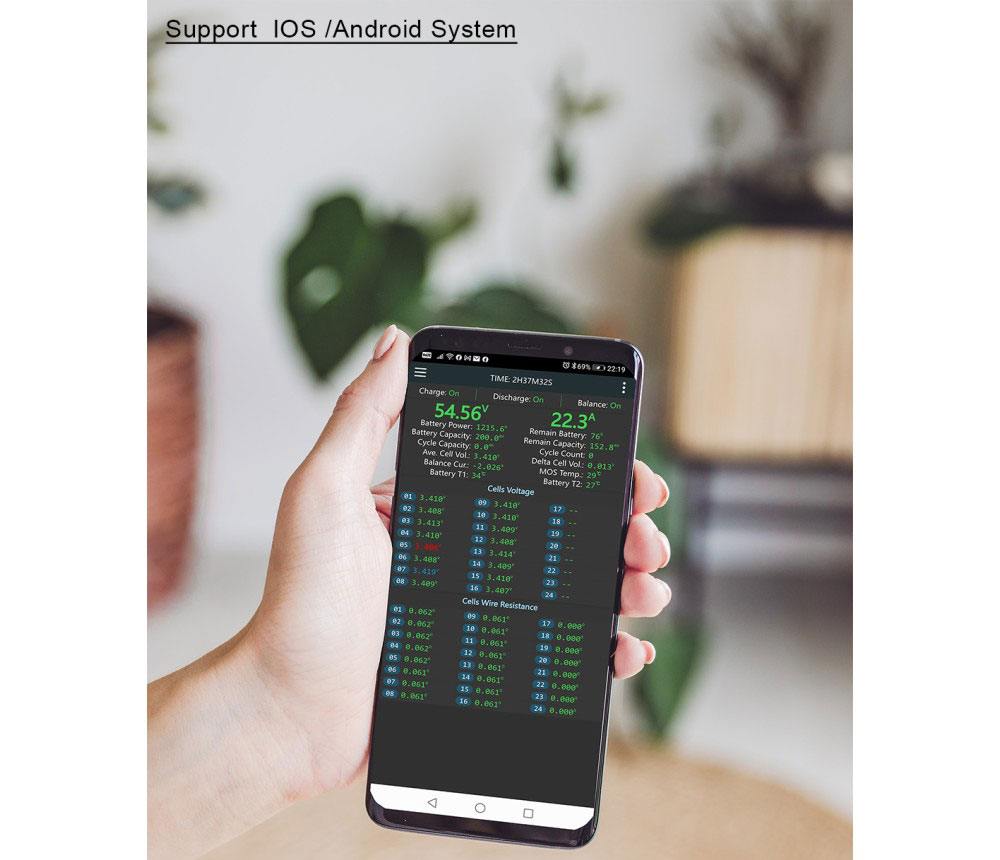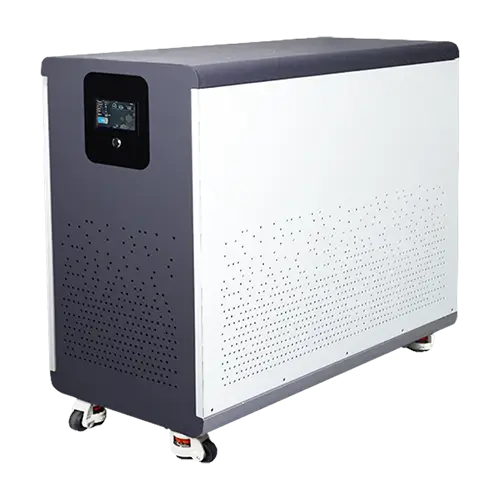
LiFePO4 solar batteries are the heart of your solar storage system, storing energy from your panels to power your home, RV, or off-grid cabin, even when the sun isn’t shining. With up to 6000+ cycles and unmatched safety, they’re perfect for solar setups—but only if maintained properly. Many DIY users miss critical maintenance steps, reducing efficiency and lifespan. These five tips will ensure your LiFePO4 solar battery thrives, maximizing your solar investment and delivering reliable power. Let’s get started!
1. Optimize Charging for Solar Energy Storage
Why it matters: Solar panels generate variable energy, and incorrect charging settings can waste power or stress your LiFePO4 battery, cutting lifespan by 20-30%.
What to do:
- Set State of Charge (SOC) and Depth of Discharge (DOD): Keep SOC at 20-90% to handle solar’s fluctuating input. Configure your Battery Management System (BMS) to stop charging at 90% and discharging at 20%.
- Use a 0.5C charging rate: For a 100Ah battery, charge at 50A or less to match typical solar panel output (e.g., 500W panels at 12V). Check your charge controller’s settings.
- Match solar profiles: Use a solar charge controller with LiFePO4 settings to sync with panel output, avoiding overcharging during peak sunlight.
DIY Tip: JK BMS’s Bluetooth app lets you monitor SOC in real-time, ensuring your battery stores solar energy efficiently. Adjust settings to match your panels’ daily output.

2. Control Temperature for Reliable Solar Power
Why it matters: Solar systems often face extreme weather, and LiFePO4 batteries perform best at 15-35°C. Temperatures above 45°C or below 0°C can reduce lifespan by 15%.
What to do:
- Choose a solar-friendly location: Install your battery in a shaded, ventilated enclosure (IP65-rated for outdoor use) to avoid heat from panels or inverters.
- Insulate for cold climates: Use battery heating pads during winter to maintain efficiency for nighttime solar storage.
- Monitor temperature: JK BMS’s app shows real-time battery temperature. Set alerts for above 40°C or below 5°C to protect your solar system.
DIY Tip: For rooftop solar setups, build an insulated box with ventilation to shield your battery from midday heat, ensuring consistent power delivery.
3. Inspect Connections for Seamless Solar Integration
Why it matters: Loose or corroded connections disrupt energy flow from solar panels to your LiFePO4 battery, reducing system efficiency.
What to do:
- Check terminals: Tighten bolts to manufacturer specs (5-7 Nm for M8 terminals) using a torque wrench to ensure stable solar energy transfer.
- Clean corrosion: Wipe terminals with a baking soda-water mix and apply dielectric grease to prevent buildup, especially in humid solar setups.
- Inspect cables: Use 4 AWG cables for 100A loads to handle solar currents without overheating. Replace frayed wires immediately.
DIY Tip: Check connections every 6 months, especially before summer when solar output peaks, to keep your system running smoothly.
4. Monitor JK BMS to Protect Your Solar Battery
Why it matters: Your BMS ensures your LiFePO4 battery handles solar energy safely. Ignoring it can miss issues like cell imbalance, which affects solar storage capacity.
What to do:
- Use the JK BMS app: Docan Power’s LiFePO4 batteries come with JK BMS, offering a Bluetooth app to check cell voltages (within 0.05V for balance).
- Watch for alerts: JK BMS flags high cell imbalance or over-temperature, common in solar systems with variable charging. Act fast (e.g., reduce load).
- Log solar data: Track monthly SOC and voltage to detect capacity drops, ensuring your battery stores enough solar energy for nighttime use.
DIY Tip: New to BMS? Our Beginner-Friendly Guide to Choosing the Perfect BMS for Your LiFePO4 Cells shows how to set up JK BMS for solar systems.

5. Troubleshoot Solar Battery Issues Like a Pro
Why it matters: Solar systems face unique challenges, like shaded panels or variable sunlight. Quick troubleshooting keeps your LiFePO4 battery reliable.
What to do:
- Battery not charging: Check if your solar charge controller is in LiFePO4 mode or if panels are shaded. Test panel voltage (e.g., 18V for 12V systems) with a multimeter.
- Reduced capacity: Verify JK BMS DOD settings. A 10% capacity drop may indicate cell imbalance; rebalance via the app or contact your supplier.
- Overheating: Reduce load (e.g., high-draw appliances) and improve ventilation. JK BMS alerts help catch this early.
DIY Tip: Use a checklist: (1) Check JK BMS alerts, (2) Inspect solar connections, (3) Test panel output. This solves 80% of solar battery issues.
Bonus Installation Tip: Set Up Your Solar Battery Right
A proper setup ensures your LiFePO4 battery maximizes solar energy storage.
- Ground your system: Connect the battery’s negative terminal to a grounding rod to prevent faults in your solar setup.
- Use a fireproof backplate: Place a cement board behind the battery for safety, especially near solar inverters.
- Match voltages: Align your battery (e.g., 12V) with panels and inverter. Learn more in our guide on avoiding common solar inverter and battery connection mistakes.
Case Study: One of our Docan Power customers purchased a LiFePO4 solar battery pack for their off-grid home system. By using the JK BMS system to regularly monitor their battery’s cell balance and temperature, they significantly boosted performance and extended lifespan. Thrilled with the results, they repurchased additional packs for their setup, proving the value of proper solar battery maintenance. Curious about their story? Explore more real-world successes in our LiFePO4 Solar Energy Battery Pack customer experiences.

Conclusion
Your LiFePO4 solar battery is key to unlocking solar energy’s potential—storing power for cloudy days or nighttime use. By optimizing charging, controlling temperature, inspecting connections, monitoring JK BMS, and troubleshooting smartly, you’ll keep your solar system efficient for 10+ years. Join our Docan Amy Facebook Group to share your maintenance tips and discuss solar battery solutions with fellow DIY enthusiasts! Start today: open your JK BMS app or check those connections to boost your solar performance!



Leave a Comment